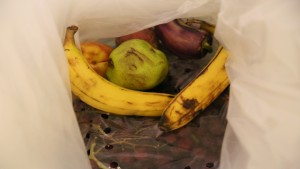By 2050, the world's population is expected to grow to nine billion people, a population increase which will require boosting global food production by 70%, according to the UN's Food and Agriculture Office. And yet, according to a recent report by this same UN agency, 1.3 billion tons of food is wasted each year while nearly 900 million people around the world struggle each day with hunger.
In the U.S. alone, 40% of the food produced each year goes to waste. That's $165 billion worth of uneaten and wasted food, according to a report authored by the Natural Resources Defense Council.
Many factors contribute to food waste, including portion sizes which have ballooned in a little more than a generation. For example, between 1982 and 2002, the average pizza slice almost doubled in calories and even our humble dinner plate has increased two inches in diameter since the 1970s, according to Dana Gunders, an NRDC staff scientist and food waste expert.
Food waste occurs not just in our homes but in grocery stores, restaurants and farms. In fact, more than half of all the fruits and vegetables grown in the U.S. never get eaten, and most of this produce never even gets to market since it it doesn't meet size or appearance specifications for retail sale.

Another culprit of food waste can be found in the use or sell by or "best before" dates stamped on practically any packaged food. As a new report co-authored by the NRDC and the Harvard Food Law and Policy Clinic makes clear, those dates are placed by the manufacturer to indicate a product's freshness, not its safety.
